Radical Weaning in Northern Australia
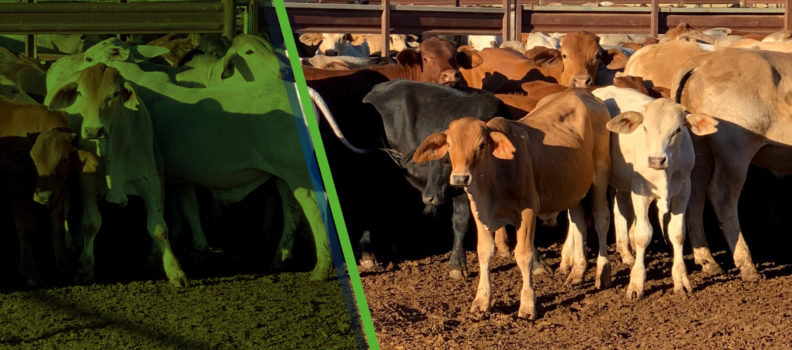
In recent years producers have been facing harsh seasons head on, developing practices to rise above the seasonal challenges thrown their way. Radical Weaning in Northern Australia is one of those and is arguably the most effective strategy to help combat feed shortfalls in some of the harshest country in Australia.
It is all about driving efficiencies in farming of today and some of the feedback from our top producers says the practice of radical weaning during the tough times makes a real difference.
So… In short, if feed is scarce, then you try to find the most efficient way… And it can be ‘Radical’.
Uncertainty around results is the most common reason why some farmers are yet to adopt these practices. This blog aims to reduce that uncertainty and discuss the practice and is benefits;
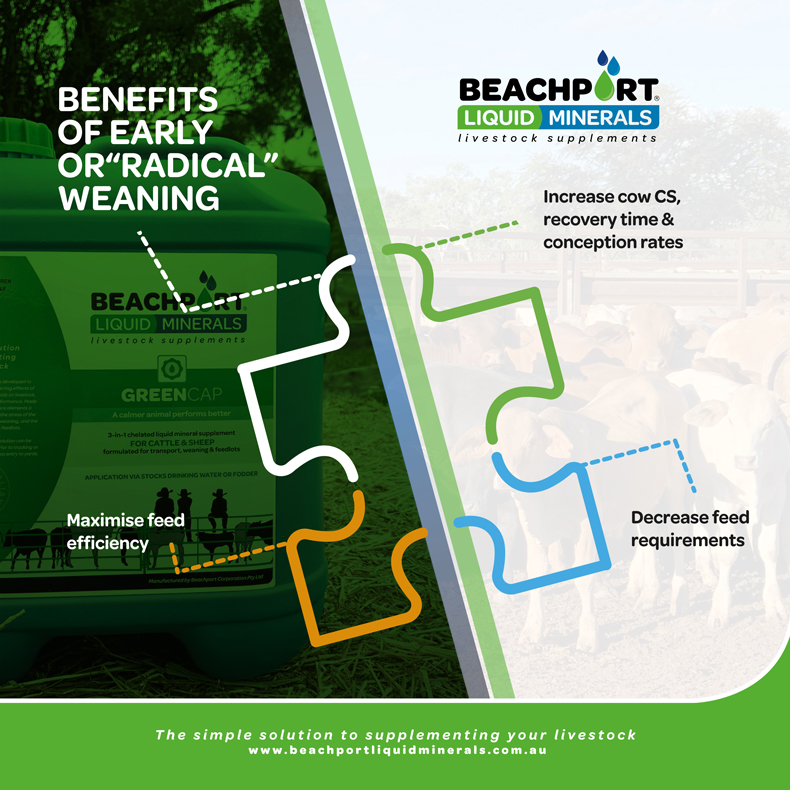
Infrastructure
Weaners should be readily accessible for feeding and drafting, I’d recommend having a smaller yard for calves roughly 40-80kg because they need the most attention.
Depending on weaner numbers, smaller paddocks should be close by to monitor them and supplementary feed if necessary.
Having weaners ‘go bush’ straight away is a recipe to lose weight or succumb to environmental challenges.
Trough Space
Troughing is key to any weaning program and cattle won’t judge if troughing’s not brand new, so if you can, be thrifty!
For feed troughs, anything lying around such as roof C-Section, broken long cement troughs, shade cloth hung to hold grain/pellets, etc will be adequate.
Lifting troughing off the ground to chest height of the weaners reduces sorting and messing in the troughs.
Setting this up is time consuming however, keep in mind you only set troughing up once. For older weaners consider self-feeders to reduce labour or loose lick stations if there’s adequate feed.
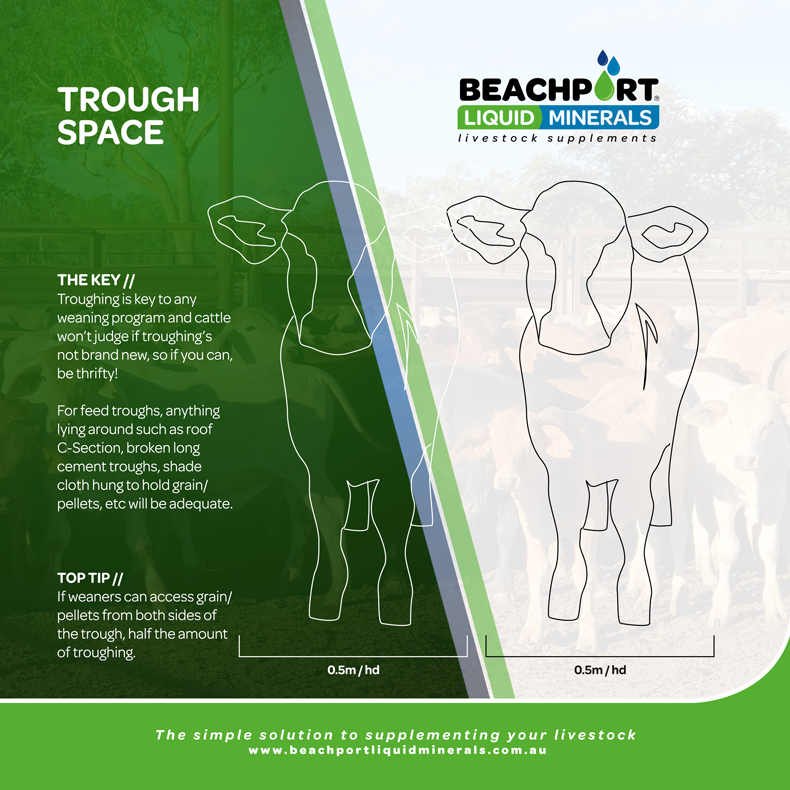
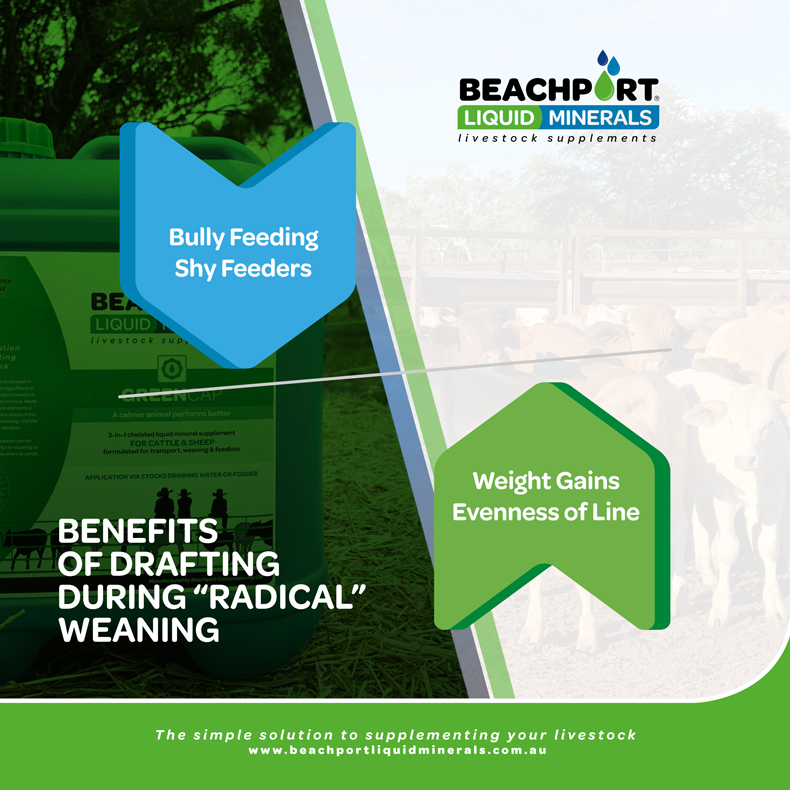
Drafting
I was lucky enough to chat with Alister McClymont, Burleigh Station; an industry leader and long-term client of BLM on radical weaning and the experience he’s had with it.
Drafting into weight ranges is one of the most important practices Alister implements at weaning. He acknowledges there’s extra work involved with drafting however, it gives him greater control of weaners getting supplementary feed in his feeding pen and allows the heavier, stronger calves to go to weaning paddocks with minimal feeding.
Redrafting a few weeks after weaning ensures calves can cope with the weaning paddocks to then ‘graduate’ to getting turned out for re-mustering 12 months down the track. Number of drafts and weight ranges will vary depending on your line of cattle, there’s no one size fits all here.
Stress Management
When calves are stressed their immune system becomes compromised and their appetites are reduced.
The quickest way to reduce stress is to get the calves to drink; simply have clean, fresh water for them to access straight away.
Clients like Alister, have Beachport floating in the trough before calves enter their pen for the first time. This ensures their first mouthfuls of water contain electrolytes and key minerals to help calm them down. It’s simple to implement and there’s no added stress by administering the product.
Its flexibility allows you to provide Beachport to cow/calf units during mustering or to the weaners after processing.
Next is to ensure quality feed is also available such as quality hay and high energy/protein rations.
Small calves need higher inclusion rates of protein in their diet because they can’t physically consume large amounts of feed. Plus, their key source of protein [milk] is gone and it must be replaced so they’re content and continue to grow.
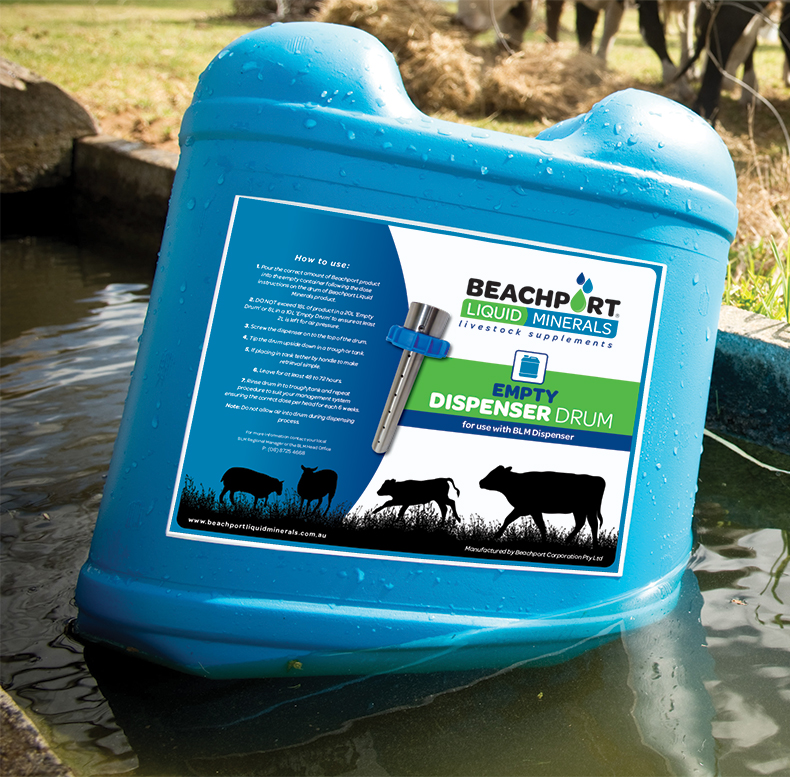
Electrolytes
Electrolytes are electrically charged minerals and compounds helping your body work, in this case, electrolytes help cattle produce energy and contract muscles.
Sodium, Phosphorus, Magnesium, and Calcium are all electrolytes contributing to vital roles such as balancing body pH, transmitting nerve signals, enabling muscle contractions [especially the heart] and regulating fluid levels in the cattle’s body and blood plasma.
In challenging circumstances like weaning, visually you’ll see dehydration as diarrhoea and/or increased urination leading to weight loss in the cows and calves. Significant changes to the cow’s and calf’s environment cause stress responses like wasting that lead to dehydration and electrolyte imbalances.
Cattle have 2 natural responses to dehydration; either to drink more water or use electrolytes to mobilise body reserves of fluids to maintain water balance in the body. By including Green Cap in your weaning program you’re including both natural responses for cattle to rehydrate and restore electrolyte balances in the body to avoid significant weight loss. Here’s how…
Green Cap is a unique formulation of fulvic acid; a natural electrolyte extracted from seagrass and kelp, able to dissolve and transport minerals into cells. It also contains the minerals Sodium, Phosphorus, Potassium, Magnesium, and Calcium that help restore the electrolyte balances to the nervous and endocrine systems.
Green Cap is administered by water medication via our dispensing system directly into the trough. Encouraging stock to drink with an aniseed attractant, every mouthful of water drunk contains electrolytes and minerals without creating any more stress to the animal.
To read more about Key Management Practices at weaning including Imprinting, animal health treatments and transitioning onto new feed please check out our Southern Weaning Blog.
Weaning with Green Cap
During mustering each Station will have slightly different infrastructure and practices. No matter what your practices are at weaning Green Cap is flexible, cost effective and easy to use. Green Cap is also available as a part of our organic range.
Along with the fulvic acid and minerals, Green Cap also provides a natural source of amino acids and trace elements such as Copper, Cobalt, and Selenium.
It provides a rich source of Magnesium to aid in calming the animal. Magnesium coupled with fulvic acid, keeps stock hydrated to minimise weight loss and stimulate appetite. Making the transition of weaners onto new feeds easier because their rumens convert feed more efficiently from Day 1.
A calmer animal performs better and by calming stressed calves it can reduce yard weaning time, reduce weight loss and improve handling. By shortening this time, calves can return to feed quicker resulting in heavier weaners and less health issues such as scouring and pink eye because their immune systems are not compromised.
Please click the links below for further information:
– Green Cap | Also available as a part of our organic range
– Find your nearest stockist
